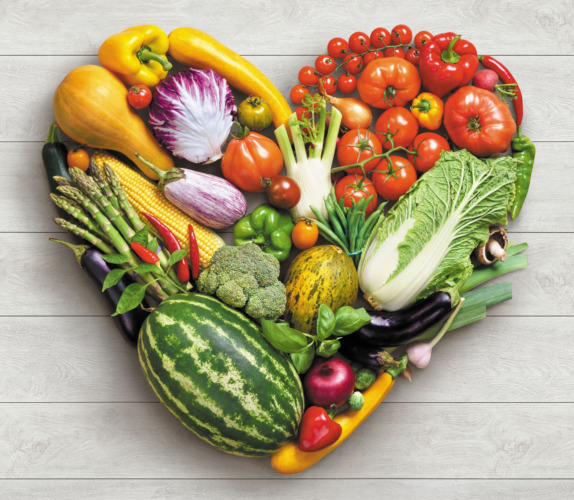
Achieving a balanced diet involves considering various factors: the ratio of calories consumed to calories expended, choosing whole foods over processed ones, and finding harmony between deliberate meal planning and the allure of quick, spontaneous purchases. The essence of intermittent fasting, exemplified by the 5:2 diet, lies in reestablishing equilibrium in one’s eating habits. The routine involves regular eating most of the time, punctuated by periods of calorie restriction, aiming to enhance both weight management and overall well-being.
But does this method yield results? We’ll delve into the 5:2 diet, examining its efficacy in weight loss and identifying who might find value in adopting this approach – and conversely, who might not.
What Is the 5:2 Diet?
The 5:2 Diet, also known as an intermittent fasting protocol.
“It consists of five days per week dedicated to normal, unrestricted food intake, paired with two consecutive or nonconsecutive days of significant calorie restriction,” clarifies Candace Pumper, a registered dietitian at the Ohio State University Wexner Medical Center in Columbus.
During the calorie-restricted days, the recommended intake ranges between 500 and 800 calories, she emphasizes.
This methodology is rooted in the concept that the human body has evolved to adapt to periods of food scarcity, reminiscent of the challenges faced by our hunter-gatherer ancestors in days of limited food availability.”
In contemporary times, our consistent availability of high-calorie foods is believed to have potentially negative consequences. This is attributed to the absence of intermittent periods of reduced calorie intake that used to stress the body. Certain studies propose that the convenient abundance of calories may be a contributing factor to the rising rates of obesity in the U.S. Consequently, some scientists suggest that re-establishing the historical pattern of fluctuating calorie intake could hold the key to addressing various health issues.
Is the 5:2 Diet Effective for Weight Loss?

Although there’s limited scientific data on the efficacy of the 5:2 diet, it has proven successful for certain individuals.
According to Pumper, the 5:2 diet “serves as an effective weight-loss strategy, resulting in body weight reductions ranging from 4% to 7% over eight to 52 weeks.”
Nevertheless, she points out that when compared to continuous calorie-restricted diets, studies indicate no significant disparity in terms of weight loss and reduction in cardiometabolic risks.
The extent of weight loss achievable with the 5:2 diet is largely contingent on one’s ability to adhere to it. Due to its restrictive nature, maintaining long-term adherence can pose a challenge for some individuals.
Guide to Embracing the 5:2 Diet
Although the scientific evidence may be limited, numerous anecdotal accounts highlight individuals achieving weight loss and overall health improvements through various intermittent fasting plans.
For those intrigued by the 5:2 plan, consider the following steps to commence your journey:
- Consult with a Health Professional: Prior to initiating the 5:2 diet or any fasting regimen, engage in a conversation with your healthcare provider. This becomes especially crucial if you harbor underlying medical conditions or harbor concerns about potential impacts on your general health. Seek personalized advice from your doctor or a registered dietitian to ensure the approach aligns with your safety and well-being.
- Determine Your Calorie Allowance: During fasting periods, you’ll markedly restrict your calorie intake. Typically, women are advised to consume around 500 to 600 calories on fasting days, while men can aim for an intake between 600 and 800 calories. Adjust these figures based on individual needs and tolerance for hunger. Adhering to the fasting concept, it’s imperative to rigorously limit your calorie intake on these days.
- Strategize Your Meals: Prewriting your meal plan aids in staying within your allocated calorie limit on fasting days. Opt for foods that are low in calories yet provide a sense of fullness, focusing on non-starchy vegetables and lean proteins.
- Prioritize Hydration: Ensure you stay well-hydrated on fasting days by consuming ample water, herbal tea, and other non-caloric beverages. Adequate hydration contributes to mitigating feelings of hunger.
- Incorporate Adequate Protein: Protein-rich foods such as chicken, fish, and tofu can contribute to a feeling of fullness and help maintain muscle mass during fasting days.
- Avoid High-Calorie and Sugary Foods: Steer clear of high-calorie and sugary items on fasting days, as these can quickly deplete your calorie allowance without offering satiety or nutritional value.
- Practice Moderation on Non-Fasting Days: On regular eating days, enjoy a normal diet without specific calorie restrictions. Nonetheless, emphasize maintaining a balanced and nutritious diet. For those leveraging the 5:2 diet for weight loss, calories remain a consideration, and portion control on non-fasting days is crucial for sustained results.
- Track Your Progress: Monitor your weight, measurements, and overall well-being while adhering to the 5:2 diet. Adjust your plan based on your progress and any signals from your body. If you encounter extreme hunger, dizziness, or adverse effects, discontinue the plan and seek guidance from your healthcare provider.


Optimal Food Choices for the 5:2 Diet
While the 5:2 diet doesn’t impose strict restrictions on particular foods or dictate specific macronutrient ratios, it encourages a focus on nutrient-dense options during low-calorie days. Consider incorporating the following foods into your regimen:
- Vegetables: Opt for non-starchy varieties like spinach, kale, broccoli, cauliflower, zucchini, and bell peppers. These veggies are rich in vitamins, minerals, and fiber, providing a sense of fullness without a significant calorie impact.
- Lean Proteins: Include sources such as skinless chicken, turkey, fish, tofu, and low-fat dairy in your 5:2 diet. Protein aids in maintaining muscle mass and promoting satiety, ensuring a lasting sense of fullness even on restricted calorie days.
- Eggs: Eggs are a versatile food high in both protein and healthy fats. They can be prepared in various ways and pair well with non-starchy vegetables.
- Legumes: Incorporate beans, lentils, and chickpeas into your fasting days. These foods are abundant in fiber and protein, offering a filling and nutritious option. Be mindful of portion sizes, as they can contribute to calorie intake rapidly.
- Whole Grains: Consume small servings of whole grains like quinoa, brown rice, or whole-wheat pasta for sustained energy and enhanced satiety. Keep portions modest, especially on fasting days, to avoid exceeding your calorie limit with a single food item.
- Low-Calorie Fruits: Include berries such as strawberries, blueberries, and raspberries in your 5:2 approach. These fruits are lower in calories compared to many others, providing antioxidants and fiber. Keep portions moderate to align with your caloric goals.
- Low-Fat Dairy: Choose low-fat, plain Greek yogurt, skim milk, or low-fat cheese as sources of calcium and protein. Opt for plain or unsweetened varieties to stay within your daily calorie limit.
- Soup: Soups and hearty broths are excellent choices for the 5:2 eating plan. A low-calorie, broth-based vegetable soup can be both filling and hydrating on fasting days.
- Herbs and Spices: Enhance the flavor of your meals with liberal use of herbs and spices. This adds interest without contributing extra calories to your diet.
Foods to Restrict on the 5:2 Diet
While the 5:2 diet allows for a variety of food choices, it’s advisable to limit certain items, particularly on fasting days. These include:
- Ultra-processed foods: Steer clear of items like chips, sugary snacks, pastries, fried foods, and processed meats. These foods often harbor hidden sugars, fats, calories, and additives that offer little nutritional value. Avoiding them allows for more flexibility in your calorie allocation.
- Full-fat dairy: Opt for skim or nonfat dairy alternatives as full-fat versions tend to be higher in calories.
- Sugar-sweetened beverages: Skip sodas, sweet teas, coffees with added sugars, energy drinks, and fruit juices. These beverages pack in calories and sugar without significant nutritional benefits. Opt for plain water instead to stay hydrated.
- Alcohol: On fasting days, it’s advisable to abstain from wine, beer, and hard alcohol. These drinks contribute empty calories and can lead to dehydration.
- White bread and refined grains: Choose whole-grain alternatives over white bread and refined grains. The refining process strips grains of fiber and essential nutrients, leaving behind only calories. Opting for whole grains reintroduces nutritional value into your diet.
The potential drawbacks of the 5:2 diet
While Pumper asserts that the 5:2 plan is generally safe, it’s crucial to carefully consider the advantages and disadvantages. Some potential risks associated with this diet include:
- Nutritional deficiencies: Drastically reducing calorie intake may challenge your ability to meet the body’s nutritional requirements, potentially leading to deficiencies over time.
- Overeating: The constraints faced on fasting days might prompt individuals to overcompensate on non-fasting days, counteracting weight loss efforts. This behavior could contribute to a cycle of binge eating and purging, exacerbating existing eating disorders.
- Hunger, anxiety, and irritability: Fasting days can be demanding, causing heightened hunger, irritability, and difficulty concentrating. Weakness may also impede regular physical activity, limiting opportunities for health improvements.
- Muscle loss: Insufficient calorie intake may force the body to break down muscle for energy, resulting in a decrease in muscle mass and a lowered metabolic rate. This could make weight loss more challenging, as muscles burn more calories at rest than fat.
- Bad breath: Fasting reduces saliva production, diminishing the ability to flush away bacteria causing bad breath, potentially leading to halitosis.
- Constipation: Inadequate fiber intake on fasting days may lead to bowel irregularities and constipation.
- Sleep disruptions: Bedtime hunger may interfere with sleep, making it harder to achieve the recommended seven to nine hours of nightly rest for optimal functioning.
Summary
The 5:2 diet, categorized as an intermittent fasting regimen, offers a potential avenue for weight loss. All foods are permissible within the 5:2 framework, with an emphasis on prioritizing nutrient-dense options like lean protein, whole grains, legumes, dairy products, fruits, vegetables, and healthy fats, rather than relying on highly processed foods, according to Pumper.
Before embarking on this diet, it is essential to consult with your healthcare provider. Additionally, careful meal planning is advised to ensure that basic nutritional requirements are met, even on fasting days. While not suitable for everyone, the 5:2 diet is generally considered safe and may be effective in shedding excess weight or improving certain health indicators.











